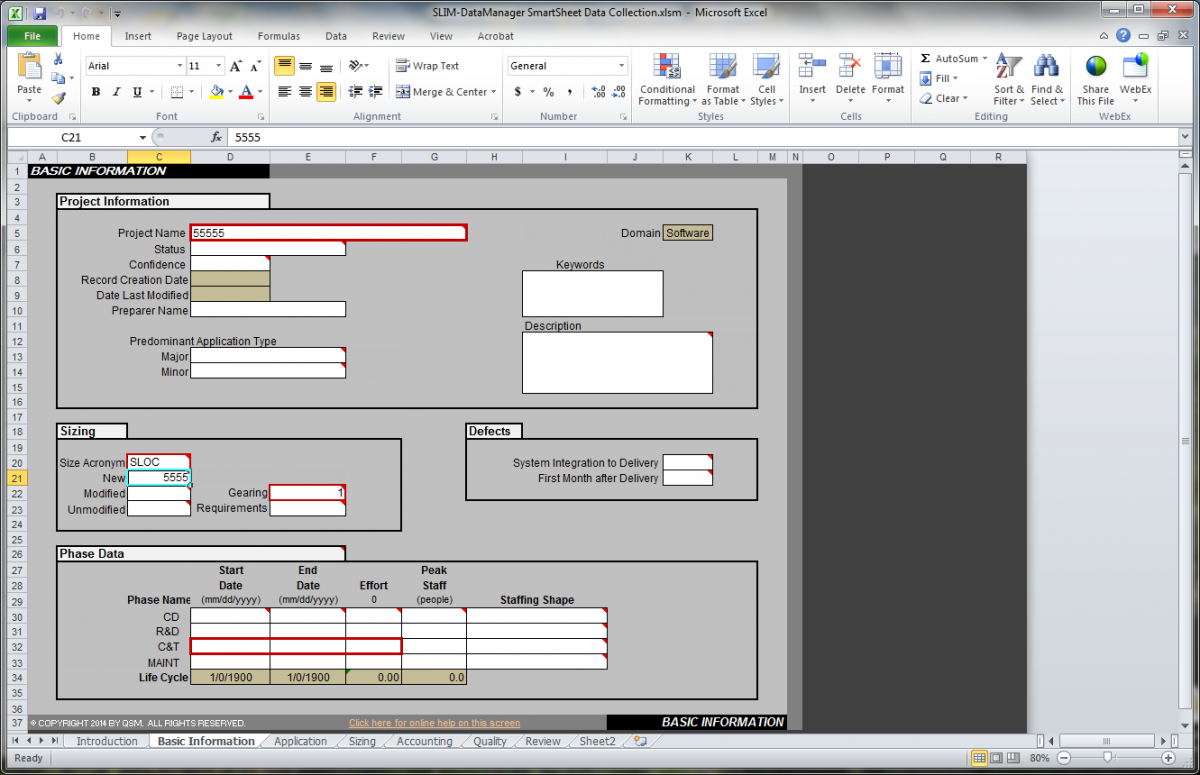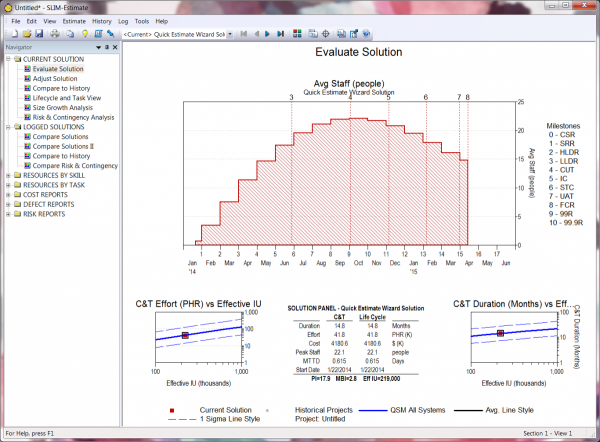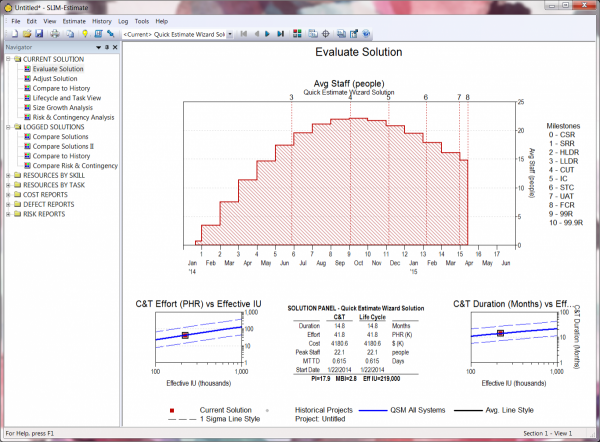Webinar - How a Collaborative Estimation Process Produces Realistic Estimates Fast
Presented by Laura Zuber.
A business stakeholder (project manager, account representative, etc.) is faced with an all-too-familiar challenge: his client requests a quote for developing a new application within a very short timeframe, and not much information about scope to go on. In this webinar, QSM's Laura Zuber shows how the business stakeholder can produce a Rough Order of Magnitude (ROM) estimate on the spot, using QSM's web-based solution, SLIM-WebServices. Follow his process as he collaborates with corporate estimation specialists to refine those initial estimates as they advance to more detailed stages. By incorporating contributions of a variety of project stakeholders in the estimation analysis process, the business stakeholder is able to make better business decisions.
Laura Zuber has over 22 years of experience in software development consulting and training, nine of which have been with QSM. She conducts training and demonstrations for all QSM SLIM Suite Tools and serves as a Lead QSM Support Representative. Prior to coming to QSM, Laura managed software development projects, and served as a senior software process improvement specialist at SAIC. She has performed process assessments, designed and implemented best practices, and co-lead the corporate metrics training program.





